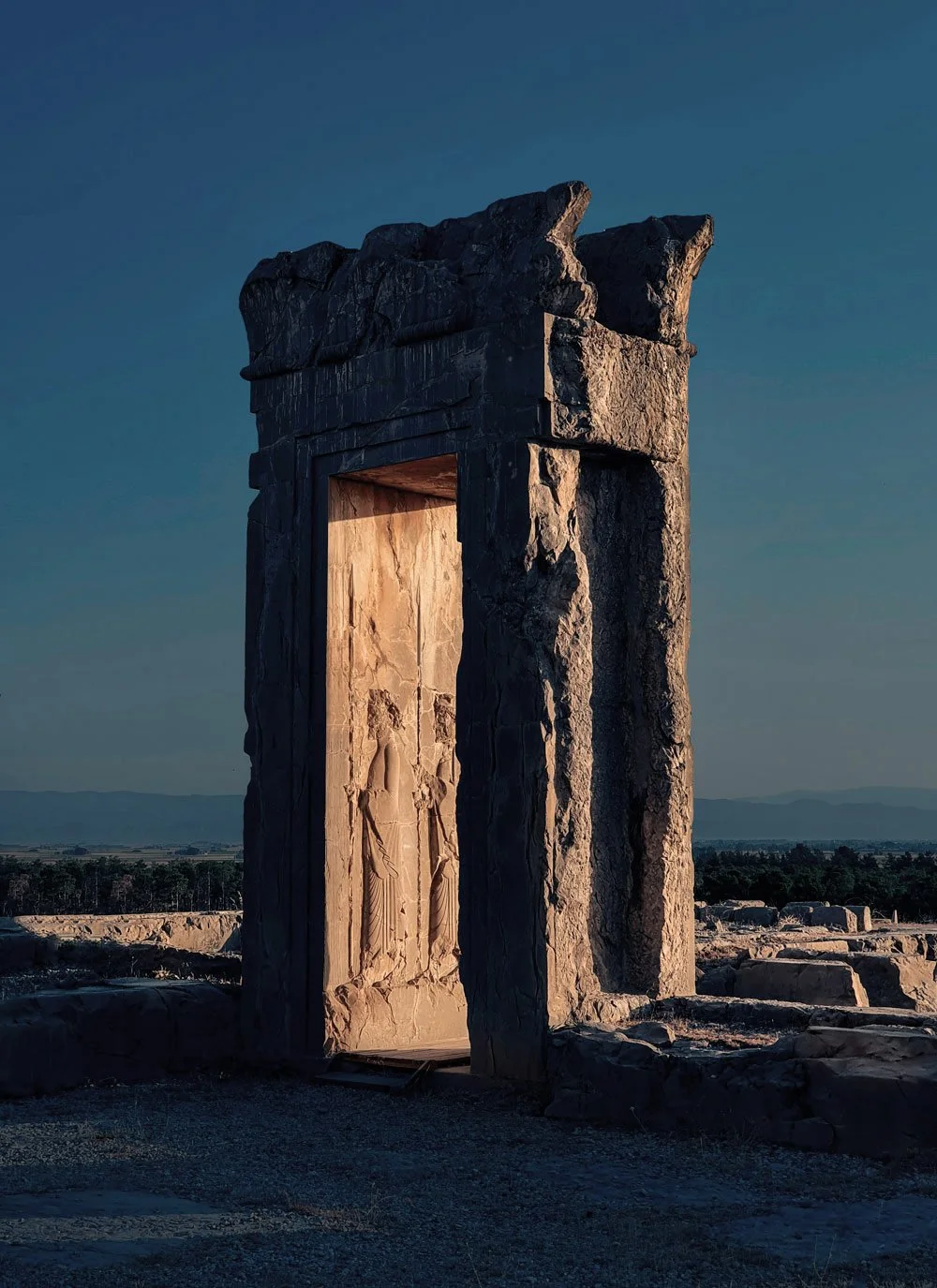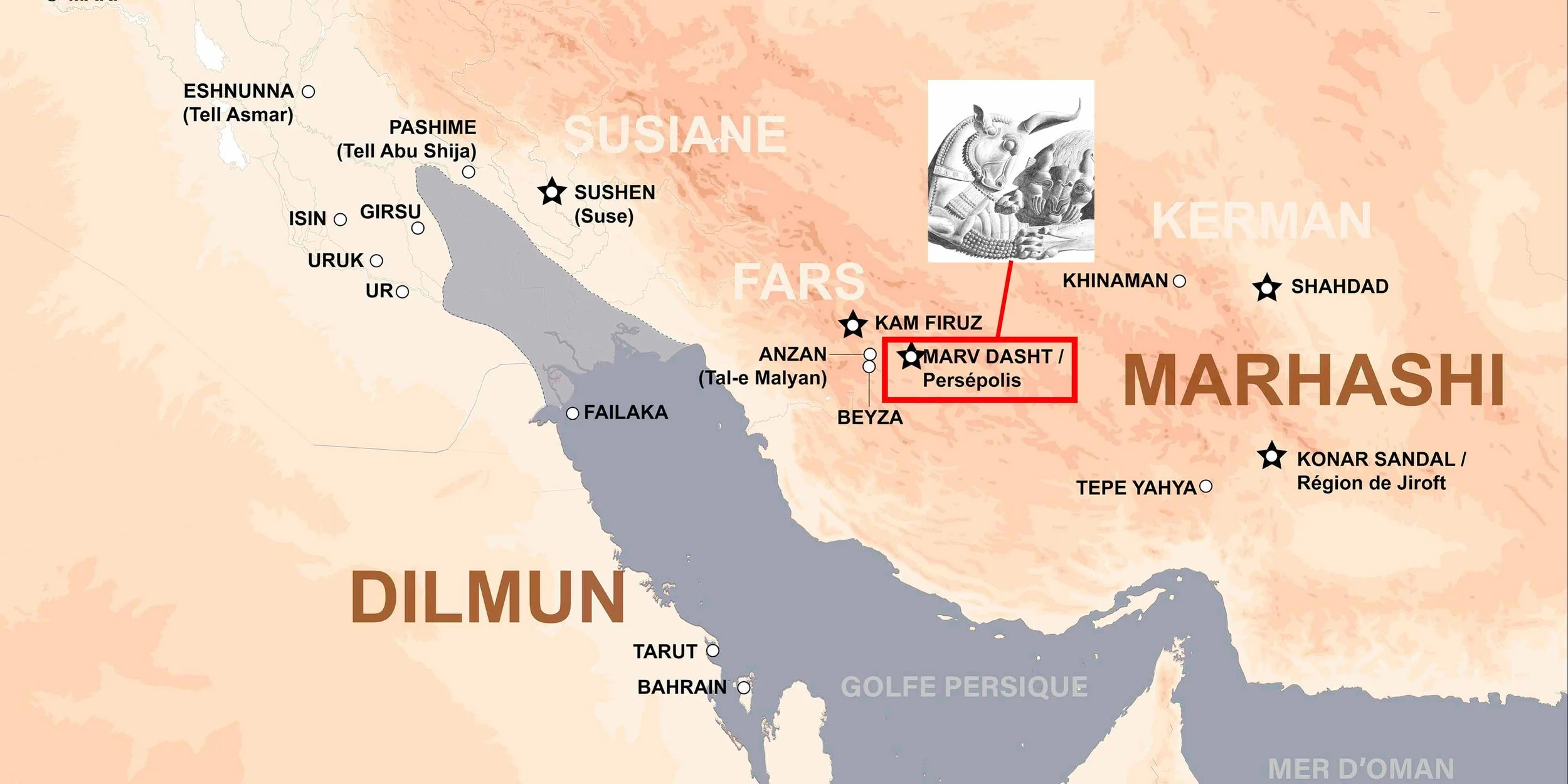
Hand drawn lion defeating a bull-Persepolis
*
Hand drawn lion defeating a bull-Persepolis *

Historical Context
The iconic lion and bull relief from Persepolis, an ancient ceremonial capital of the Achaemenid Empire (550–330 BCE), is a powerful symbol of cosmic duality and balance. This motif, depicting a lion attacking a bull, is thought to represent the eternal struggle between opposing forces, such as day and night, or the cyclical nature of seasons. Carved into the grand staircases of the Apadana Palace, these reliefs were not only decorative but also symbolic, emphasizing the Achaemenid rulers’ divine mandate to maintain order and harmony in their vast empire. Today, this relief stands as a testament to the artistic and cultural achievements of ancient Persia.

Historic map of the Achaemenid Empire, William Robert Shepherd (1871-1934), Public Domain.
The Achaemenid Empire and the Apadana Palace
The Achaemenid Empire (550–330 BCE) was one of the largest and most influential empires in ancient history, founded by Cyrus the Great and expanded under rulers like Darius I and Xerxes I. Spanning from the Balkans to the Indus Valley, it united diverse cultures and regions under a centralized administration, emphasizing tolerance, innovation, and monumental architecture.
The Apadana Palace at Persepolis epitomizes the empire's grandeur and cultural inclusivity. Built under Darius I and completed by Xerxes I, the Apadana served as a ceremonial hall where representatives of the empire’s vast territories brought tributes to the king. Its 72 columns, intricate reliefs depicting delegations from across the empire, and sheer scale symbolized the king's authority and the unity of the empire's diverse peoples.
This monumental structure reflects the Achaemenids’ values of harmony, cultural exchange, and their commitment to showcasing their power through stunning architectural achievements. Today, the Apadana stands as a testament to the sophistication and vision of the Achaemenid civilization.

Persepolis
Location: Situated in southern Iran, near Shiraz, on a plateau surrounded by mountains.
Origin: Founded by Darius I in 518 BCE as a new ceremonial capital.
Function:
Ceremonial capital used for special occasions, such as Persian New Year (Nowruz) celebrations.
Hosted delegations from the satrapies, symbolizing the unity of the empire.
Architectural Features:
Monumental stone structures, such as the Apadana (audience hall) and the Gate of All Nations.
Sculptures and bas-reliefs depicting tributary delegations presenting offerings to the king.
Climate: Drier, ideal for seasonal gatherings and ceremonies.

Artistic Process
In this piece, I use a traditional pencil drawing technique to capture the intricate details and textures reminiscent of ancient sculptures, such as the Lamassu. By carefully selecting pencils with varying levels of hardness—from 2H for delicate, fine lines to 2B for deeper, richer shadows—I create a sense of depth and dimensionality that brings the relief to life.
To enhance the impression of sculptural relief, I focus on layered shading and subtle transitions between light and shadow. Using blending tools such as stumps or tissues, I smooth out pencil strokes, allowing for a more realistic interplay of light and texture. Each pencil mark is intentional, whether it accentuates the curve of a lion’s mane or the intricate details of a bull’s decorative elements.
This approach mirrors the artistry of ancient craftsmen, whose skillful carvings gave life to monumental reliefs, evoking both awe and timeless beauty. My goal is to honor their legacy through my art, emphasizing the interplay of light, shadow, and intricate detail.

Threats to Persepolis: Protecting an Ancient Treasure
While Persepolis has been spared from the destruction caused by war, unlike the Lamassu statues in Iraq, this iconic site faces significant threats that endanger its preservation. As one of the most remarkable remnants of the Achaemenid Empire, Persepolis requires ongoing efforts to protect its rich cultural legacy.
1. Natural Threats
Lichen Growth: Lichens, a combination of fungi and algae, are spreading across the ancient stones of Persepolis. These microorganisms penetrate the surface of the monuments, causing gradual erosion of carvings and inscriptions. This issue is exacerbated by atmospheric changes, such as increased nitrogen levels due to industrialization.
Erosion and Weathering: Exposure to wind, rain, and fluctuating temperatures over centuries has taken a toll on the site. The intricate reliefs and monumental structures are slowly being worn down by natural elements.
2. Human Impact
Tourism: While tourism brings attention to Persepolis, it can also pose risks. Improper visitor management, such as touching reliefs or stepping on fragile areas, accelerates the deterioration of the site.
Limited Conservation Resources: Efforts to maintain and restore Persepolis are often hindered by a lack of sufficient funding and resources, slowing necessary preservation work.
3. Conservation Efforts
Experts are employing modern techniques to combat these threats. Laser cleaning and specialized chemical treatments are being used to remove lichens from the stone surfaces without damaging the reliefs. However, these processes are time-consuming and require substantial financial support.
Persepolis remains a symbol of ancient Persia’s grandeur, but its survival is far from guaranteed. The combined effects of natural and human-induced threats highlight the need for increased awareness, resources, and international collaboration to protect this UNESCO World Heritage site for future generations.

The Threat to Cultural Heritage in Times of War
In 2020, former U.S. President Donald Trump threatened to target 52 Iranian sites, including significant cultural landmarks, sparking international outrage. The deliberate destruction of cultural heritage is considered a war crime under international law. A 2017 UN resolution recognized such acts as part of "cultural cleansing," emphasizing the strategic use of heritage destruction to destabilize societies.
Irina Bokova, then Director-General of UNESCO, declared that “the deliberate destruction of heritage is a war crime” and highlighted its deep societal impact. Protecting cultural heritage is not only a cultural necessity but also a security imperative, inseparable from the protection of human lives. This underscores the importance of global efforts to safeguard our shared history during conflicts.





